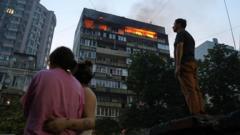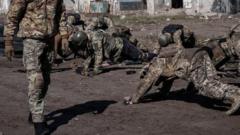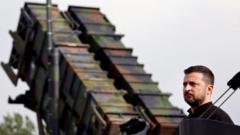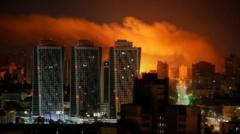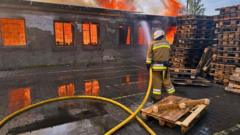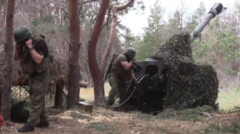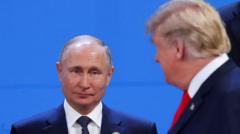The recent exchange involved 270 Ukrainian servicemen and 120 civilians, with both sides indicating further negotiations and future releases could follow shortly.**
Major Prisoner Exchange Between Ukraine and Russia Marked as Largest Since 2022 Invasion**

Major Prisoner Exchange Between Ukraine and Russia Marked as Largest Since 2022 Invasion**
A significant milestone in the ongoing conflict, Ukraine and Russia have executed a large-scale prisoner swap of 390 individuals, the highest since the onset of hostilities.**
The ongoing conflict between Ukraine and Russia took an unexpected turn with the announcement of a landmark prisoner swap. This exchange, the largest since the full-scale invasion began in 2022, involved the handover of 390 individuals: 270 Ukrainian servicemen and 120 civilians were freed at the Ukrainian-Belarusian border.
This momentous exchange is part of a broader agreement reached during brief negotiations in Istanbul a week earlier, indicating an initial step toward reopening diplomatic dialogue in a protracted conflict. While both nations have engaged in smaller-scale swaps in the past, this operation is distinguished by the significant number of civilians released, marking an unprecedented scale.
Ukrainian President Volodymyr Zelensky communicated joy over the developments via social media, underscoring the importance of the exchange while emphasizing the thorough verification of identities involved. Both military officials and relatives of the exchanged individuals expressed a mix of relief and anticipation, as families gathered in northern Ukraine hoping to welcome their loved ones back home.
Significantly, individuals returned include those captured in previous military offensives, reinforcing the dire human impact of the ongoing conflict. With three of the exchanged individuals being women, the narrative of personal hardship gained visibility through the testimonies shared by families of captives waiting for their loved ones' return.
The talks that led to the swap occurred amid a backdrop of stalled peace initiatives and rising tensions, with Russian Foreign Minister Sergei Lavrov asserting plans for a second round of discussions were forthcoming. Yet there remains skepticism about the possibility of a ceasefire, following recent commentary from Zelensky accusing Putin of exploiting the situation to gain more time to continue the aggression.
International figures, including U.S. President Donald Trump and Italian Prime Minister Giorgia Meloni, have shown interest in mediating future negotiations, with varying degrees of optimism regarding their potential effectiveness. Lavrov's remarks, however, emphasized a reluctant view on external mediation, reiterating claims that challenge Zelensky's legitimacy, and suggesting Ukrainian elections may need to precede any formal peace agreement.
As the situation remains fluid, this significant prisoner exchange may serve as a pivotal moment, drawing attention to the urgent need for humanitarian consideration even amid escalating conflict. With promises of future exchanges on the horizon, the hope for peace in the region continues to linger, albeit against a backdrop of complex international relations and deep-seated national grievances.


